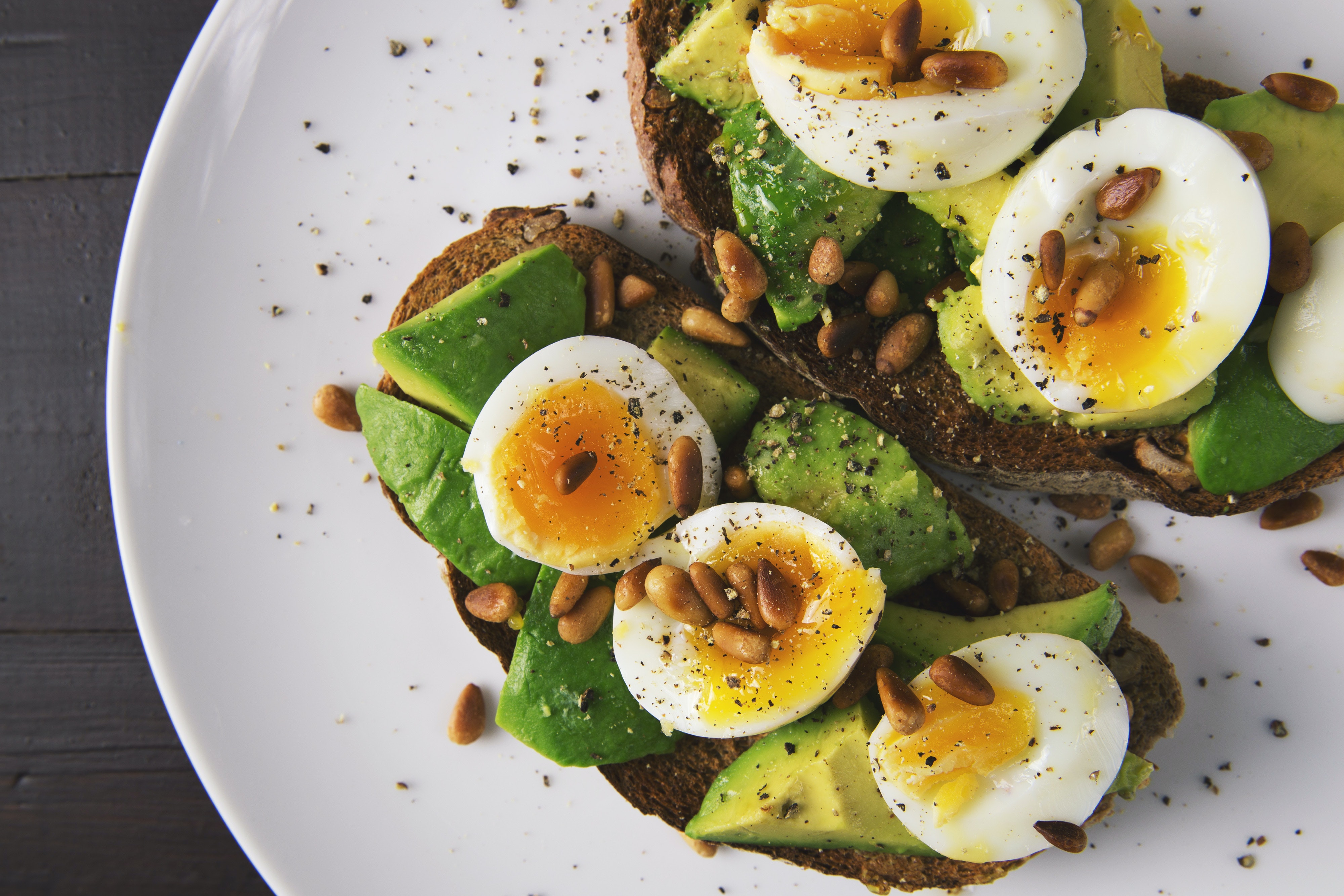The Ketogenic Diet: An In-depth Beginner's Guide To Keto
What is a ketogenic diet?
The ketogenic diet, which is very low in carbs and high in fat, shares many similarities to the Atkins diet.
This involves drastically reducing carbohydrate intake, and replacing it by fat. Your body will go into ketosis when you have reduced carbohydrate intake.
Even Ketogenic diets could have some benefits against Alzheimer's, diabetes, cancer, epilepsy and epilepsy.
Many studies have shown that this diet is effective in helping you lose weight and improve your overall health.
Your diet should include meat, fish, eggs and butter as well as nuts, healthy oils, avocados and low-carb veggies.
Rotating vegetables and meats over the long-term is a good idea, as each type of food has different nutrients and health benefits.
A ketogenic diet allows you to eat many delicious and nutritious meals. You don't have to eat only meats or fats. Vegetables are an essential part of a healthy diet.
A keto diet calls for snacks that include:
- meat,
- cheese and
- olives.
Origin

The ketogenic diet was originally developed to treat neurological disorders such as epilepsy.
Basics of the Keto Diet
Here's the basic idea of keto: The diet forces your body to use a different type fuel. The keto diet does not rely on sugar (glucose), which is derived from carbohydrates, such as grains, legumes and fruits. Instead, it relies on ketone body, a type fuel that your liver creates from stored fat.
It seems like a great way to lose weight is to burn fat. It is not easy to get the liver to produce ketone bodies.
The keto diet allows healthy unsaturated fats such as nuts (almonds and walnuts), seeds avocados, tofu, olive oil, and tofu. Saturated fats such as butter, butter, lard, cocoa butter and coconut oil are discouraged in large quantities.
The keto diet includes protein, but it doesn’t distinguish between lean protein foods or protein sources high in saturatedfat such as pork, beef, and bacon.
What about fruits, vegetables?
Although all fruits are high in carbs, you can eat certain fruits (usually berries), in smaller portions. Vegetables are also rich in carbs and should be limited to leafy greens like kale, Swiss Chard, spinach, cauliflower, Brussels sprouts or asparagus. About six carbs are found in a cup of chopped broccoli.
Check out our visual guides for more information on specific topics, such as what fruits and nuts you can eat when following a ketogenic diet.
What is ketosis?
The best way to get into ketosis is to follow a ketogenic diet. This means limiting carb intake to 20-50 grams daily and consuming more fats such as meat, fish and eggs.
Intermittent fasting can also be helpful in getting into ketosis quicker. Intermittent fasting can be done in many ways. The most popular is to limit food intake to 8 hours per day, and then fast for 16 hours.
What is Gluconeogenesis?
Endogenous glucose production is what happens in the body. It occurs primarily in the liver from lactic acid, glycol, and amino acids alanine, as well as glutamine. As glucose availability decreases further, the body's endogenous glucose production is unable to keep up and ketogenesis is initiated to create an alternative source of energy. Ketone bodies are able to replace glucose as the primary source of energy. Low blood glucose feedback causes ketogenesis. The stimulus for insulin secretion decreases sharply, which reduces the stimulation for fat storage and glucose storage. Other hormonal changes could also contribute to the increased metabolism of fats, which can lead to fatty acids. Fatty acids can be metabolized into acetoacetate, which is then converted to beta-hydroxybutyrate or acetone. These are the basic ketones bodies that accumulate in the body when a ketogenic diet continues. This metabolic state is called "nutritional ketosis". The metabolism will remain in ketosis as long as there are no carbohydrates. Because ketone bodies can be produced in low levels without affecting blood pH, nutritional ketosis is safe. This is a vastly different from ketoacidosis which can be life-threatening and causes blood pH to change to acidic.
Fasting
Intermittent fasting is a way to alternate between eating and fasting. Many people experience a decrease in hunger when following a keto diet. You might find that you eat less often if you follow our advice to only eat when you feel hungry. Or, you might plan fewer meals to meet your decreased appetite. This could be two meals per day for some, or skipping breakfast. Others may eat only one meal per day. This is sometimes referred to as OMAD (one meal a days).
You want to know more about intermittent fasting and how you can get started?
After a few weeks of following a keto diet, you'll feel fantastic and have plenty of energy. The first few days or weeks of a keto diet can be difficult because your body switches between burning glucose and burning fat for fuel.
This is commonly called the "keto flu" or the shift in your body's fluid and minerals. This happens when your body's fluid balance changes and you eat fewer carbs.
Obesity
Despite medical advances, obesity is still a significant health risk. Adult mortality can reach as high as 2 million each year. Obesity is a major cause of many chronic diseases such as diabetes, hypertension, heart disease, and hypertension. The obesity epidemic can be managed by a variety of diets that are well-designed. One diet regimen that has proven to be very effective for rapid weight loss is a very-low-carbohydrate and high-fat ketogenic diet. This activity discusses the considerations and evaluation of the ketogenic diet. It also discusses the role played by the interprofessional team in the education of patients about the benefits and risks of this diet.
Diabetes and prediabetes can be controlled with ketogenic diets
Refined carbs and sugar are particularly dangerous.
A low-carb, keto or keto diet can help to reduce liver fat, insulin resistance and possibly even reverse this.
Even though there is less research on the keto diet's benefits for other conditions, evidence suggests it may be beneficial for some -- and it is definitely worth it.
Are there any health risks associated with a keto diet? While more research is needed on the long-term effects of keto diets on health, evidence suggests that they provide adequate nutrition and are unlikely to cause any harm.
Keto also has other health benefits
Numerous health conditions can be helped by a healthy diet, according to studies.
A study of 34 older adults revealed that people who followed a ketogenic diet for eight weeks lost almost five times more total body fat than those who followed low-fat diets.
A study of type 2 diabetic women found that a ketogenic diet for 90-days significantly reduced hemoglobin A1C levels. This is a measure long-term blood sugar management.
They also had better blood sugar management and used fewer blood sugar medications over the course of their study.
In various studies, the ketogenic eating plan has been shown to be effective in treating a wide range of neurological disorders like epilepsy and dementia, ALS, traumatic head injury, cancer, and metabolic disorders.
Possible side effects
The ketogenic diet is generally safe for most people. However, you may experience some side effects as your body adjusts.
These effects are often called the keto flu. There is some evidence to support this claim. According to reports, the keto flu usually disappears within a few days.
Some symptoms of keto flu include vomiting, diarrhea, constipation and nausea. Other less common symptoms include:
For the first few weeks, you may want to stick to a low-carb diet. This could help your body burn more fat than if you eliminate all carbs.
Avoid these foods
Intermittent fasting can also be helpful in getting into ketosis quicker. Intermittent fasting can take many forms, but the most popular is limiting your food intake to 8 hours per day and then fasting the 16 remaining hours.
You should avoid foods that are high in carbs, both starchy and sugary.
Avoid or limit processed foods, and instead eat keto-friendly options.
Dining Out
Choose a meat- or fish-based dish when dining out. For dessert, order extra vegetables instead of starches or carbs and cheese.

